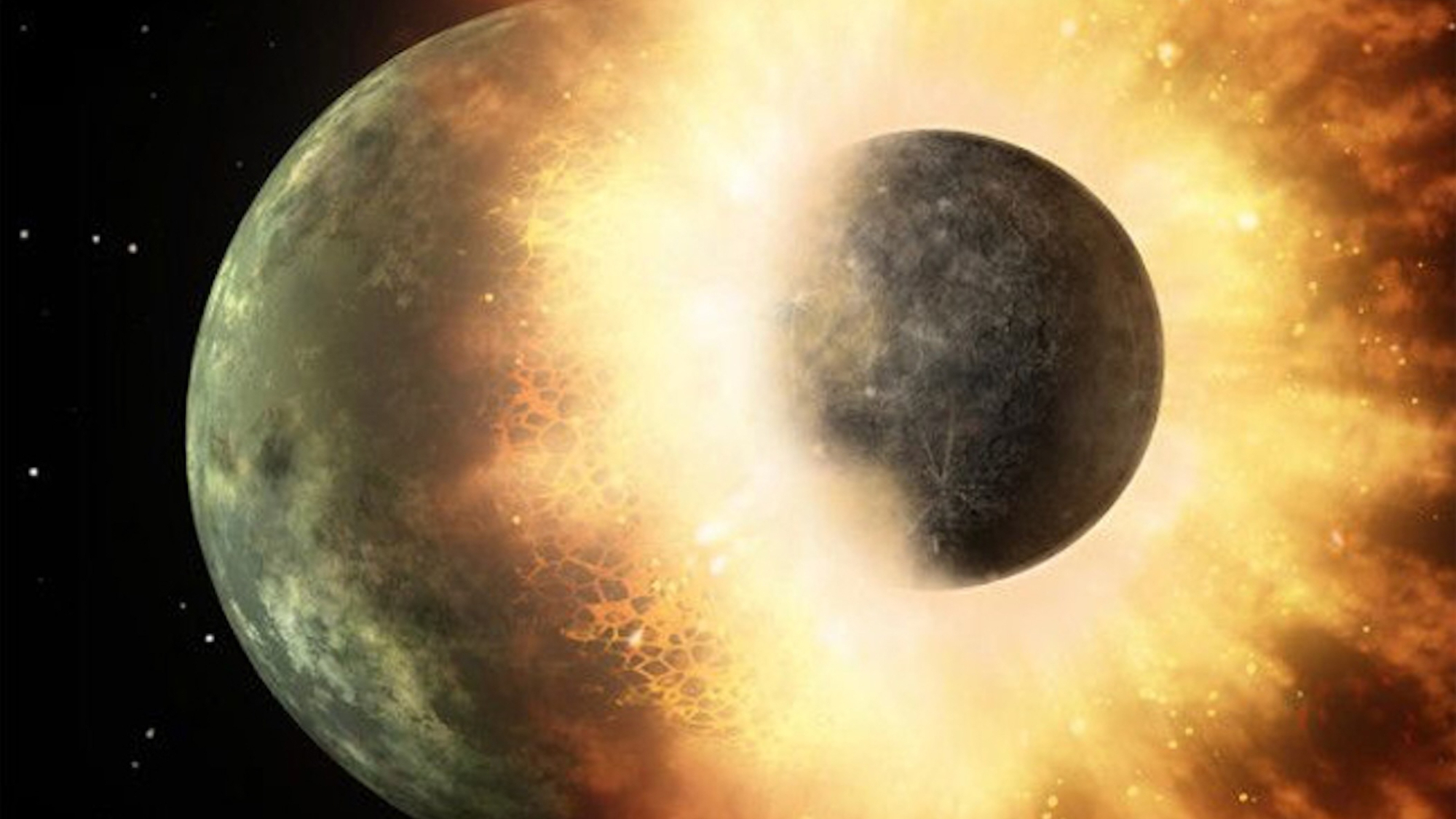Newborn moon may have had many mini-siblings in Earth orbit long ago
The findings suggest that similar moonlets could orbit distant exoplanets and their moons. researchers said.

When Earth and our moon were much closer together than they are now, the duo could have had tiny companions, or a disk revolving around them in orbits around the pair's poles, a new study finds.
These findings suggest that similar moonlets could orbit distant exoplanets and their moons, researchers said.
Currently the moon circles Earth from a distance of about 239,000 miles (384,600 kilometers), which is about 30 times Earth's diameter. However, the moon and Earth are expected to grow farther apart over time, creeping away from one another at the rate of about 1.5 inches (3.8 centimeters) per year, roughly the speed at which fingernails grow, according to NASA.
However, the moon was once much closer to Earth. The moon formed about 4.5 billion years ago, likely in the aftermath of a giant collision between a Mars-size rock and the newborn Earth. The moon coalesced out of debris from the catastrophic impact at a distance of about 11,890 miles (19,135 km), which is about 1.5 times Earth's diameter, researchers explained.
Related: How did the moon form?
Other ways in which the moon's orbit has changed over time raise mysteries about the moon's origin. Currently, the moon's orbit around Earth is tilted by about 5 degrees with respect to our planet's orbit around the sun. However, previous research suggested that when the moon was born, its orbit was inclined by at least 10 degrees. Much remains uncertain about why it was so tilted when the moon was coalescing, since researchers would expect the body to form aligned to Earth's orbit around the sun, the scientists noted.
In the new study, the researchers examined the ways in which the gravitational pull of debris from the impact that formed the moon could help explain how the moon's orbit changed over time.
Breaking space news, the latest updates on rocket launches, skywatching events and more!
"During the early formation stages of the solar system, there were a lot more smaller bodies and debris than there are today," study co-author Stephen Lepp, an astrophysicist at the University of Nevada, Las Vegas, told Space.com.
Much of the debris from the moon's formation likely collided with the moon or Earth, or was thrown clear of both. However, some of it could have ended up revolving around the Earth and moon in so-called circumbinary orbits.
The scientists found the Earth-moon system could have once fostered a companion or a disk around itself in a polar orbit — ones that revolved around the poles of Earth and the moon, instead of around their equators. Although there are no stable polar circumbinary orbits around Earth and the moon in the present day, they discovered such orbits were stable immediately up to the formation of the moon, up until the distance between Earth and the moon reached a distance of about 7.5 times Earth's diameter.
"Most work on the dynamics of orbits around the Earth-moon system has concentrated on the current orbital configuration," study co-author Rebecca Martin, an astrophysicist at the University of Nevada, Las Vegas, told Space.com. "When we found that the current configuration wouldn't support polar orbits, we decided to look at earlier times when the separation between the Earth and the moon was much smaller."
A companion moon or disk in a polar orbit around the moon and Earth in early times might have influenced the evolution of the moon-Earth orbit in a major way. This could in turn help explain mysterious aspects about its current features, even though such polar material would have disappeared by today, the researchers said.
"While it may be difficult to prove whether there was polar-orbiting material around the Earth-moon system, it does raise the possibility for the formation of long-term stable polar moons in exoplanetary systems," Lepp said. "Polar-orbiting moons could change the dynamics of the exoplanet-moon system and therefore potentially have observable consequences."
The scientists detailed their findings in a study accepted for publication in the Astrophysical Journal.

Charles Q. Choi is a contributing writer for Space.com and Live Science. He covers all things human origins and astronomy as well as physics, animals and general science topics. Charles has a Master of Arts degree from the University of Missouri-Columbia, School of Journalism and a Bachelor of Arts degree from the University of South Florida. Charles has visited every continent on Earth, drinking rancid yak butter tea in Lhasa, snorkeling with sea lions in the Galapagos and even climbing an iceberg in Antarctica. Visit him at http://www.sciwriter.us
